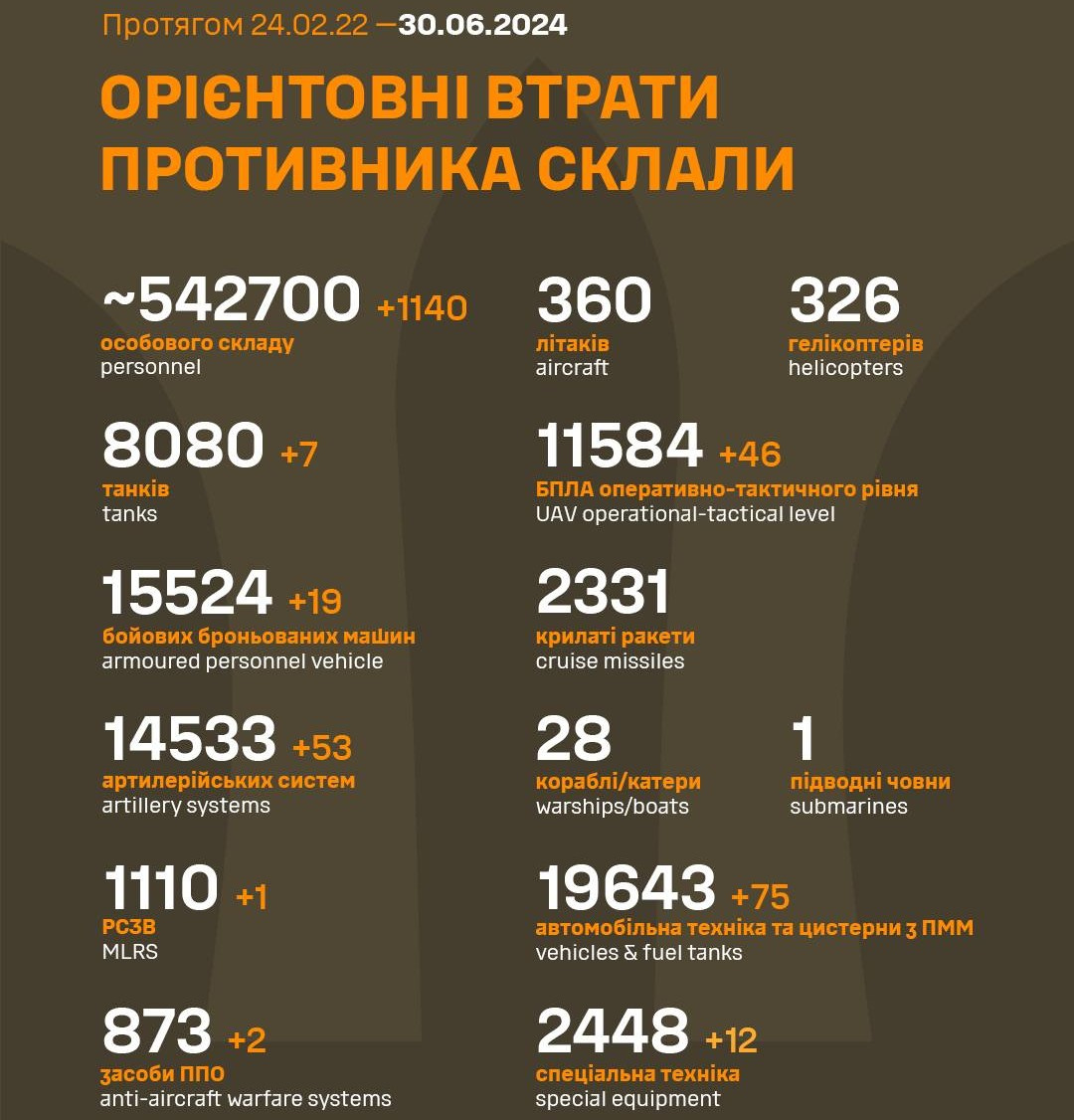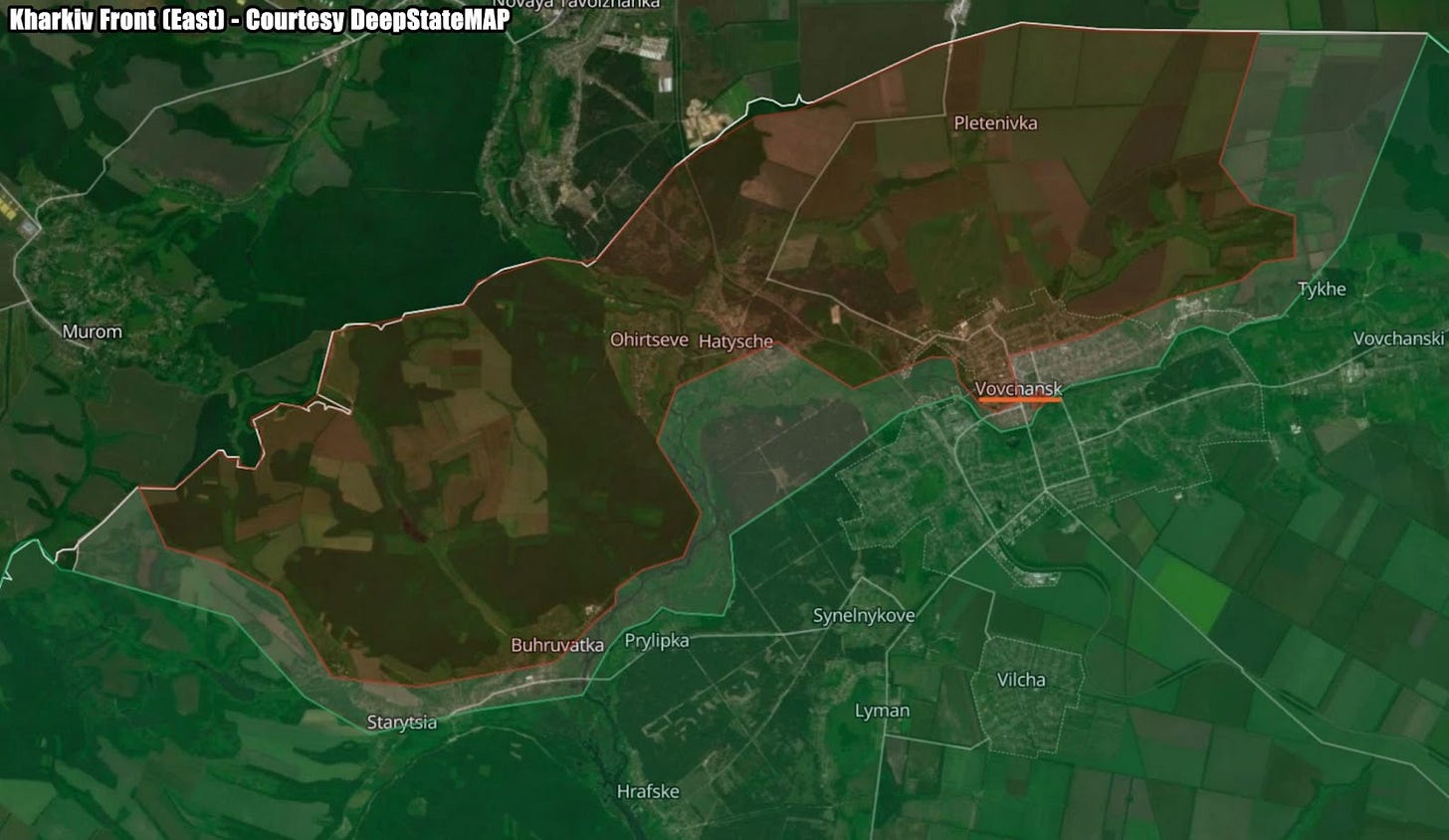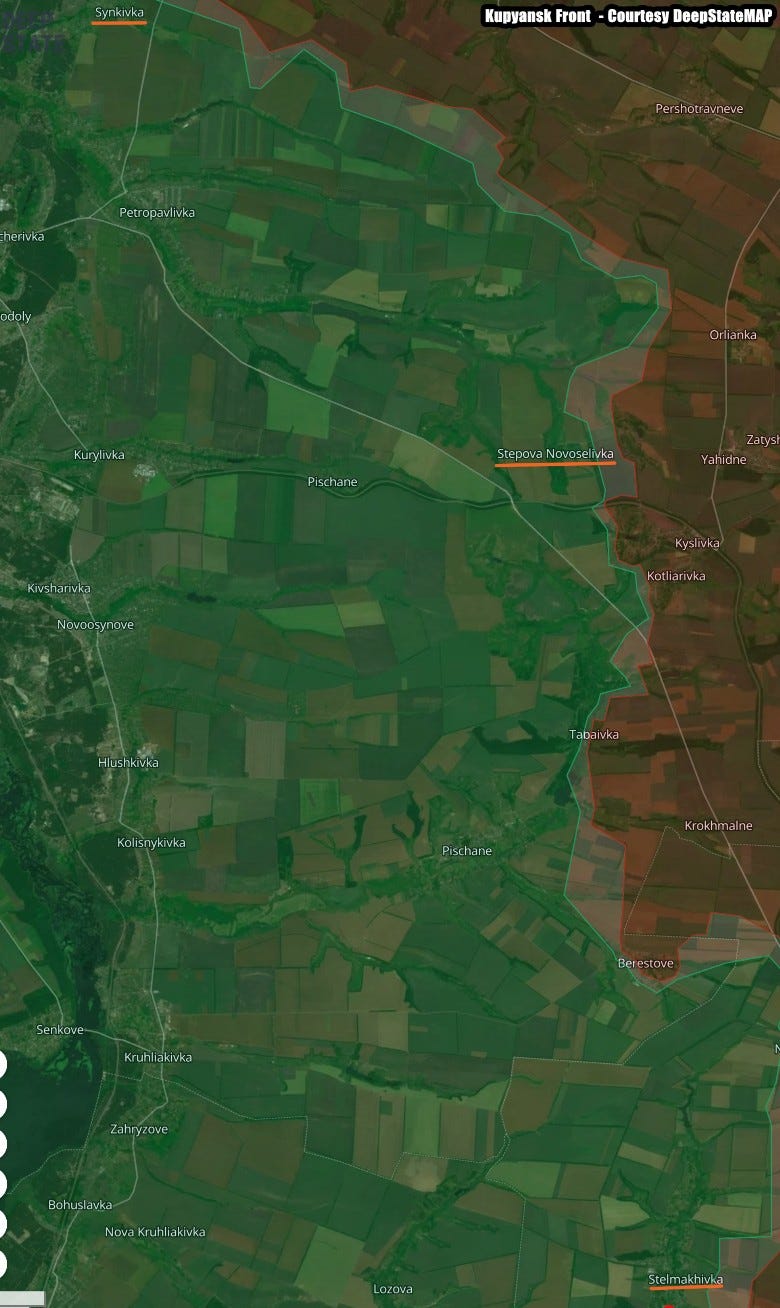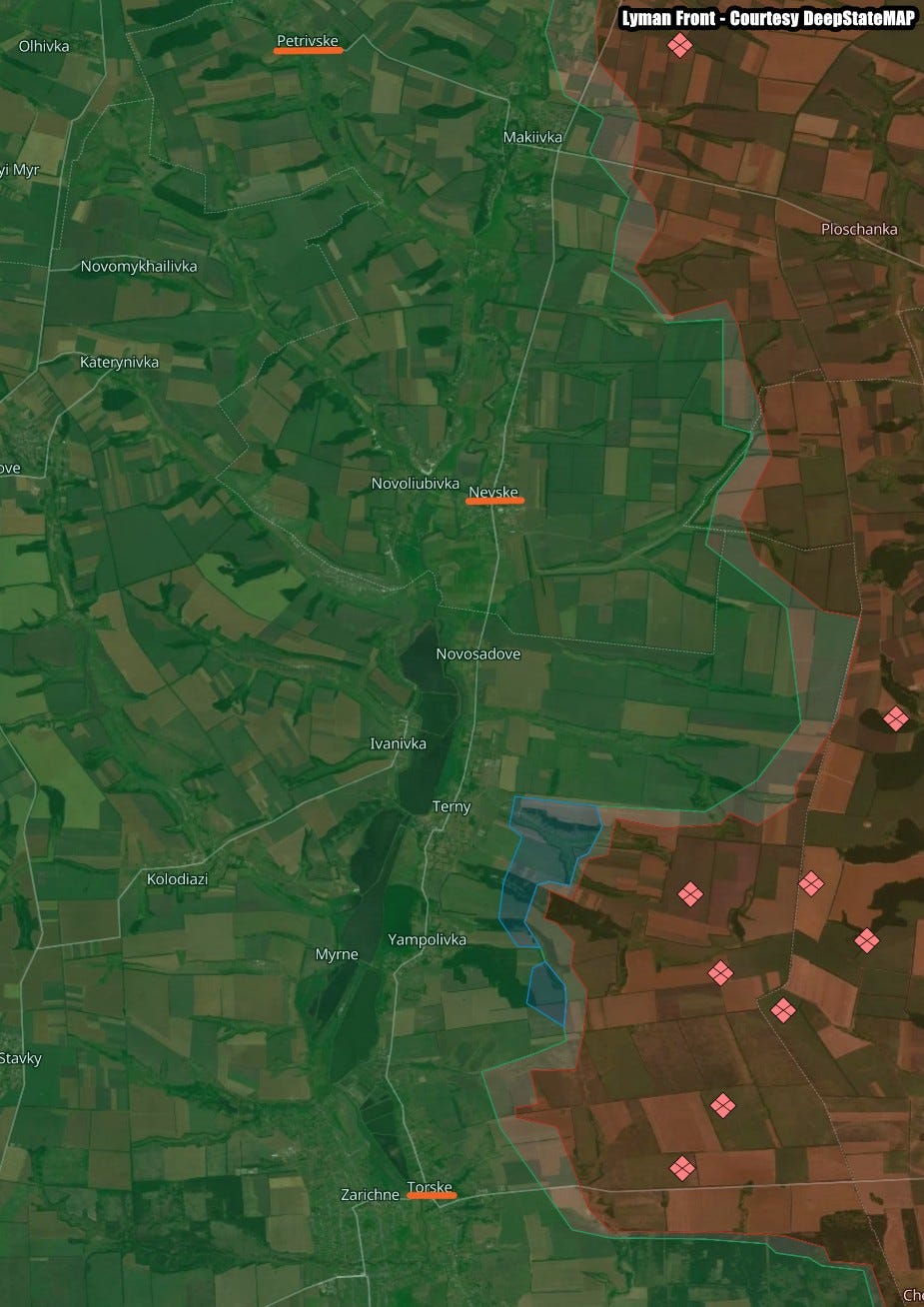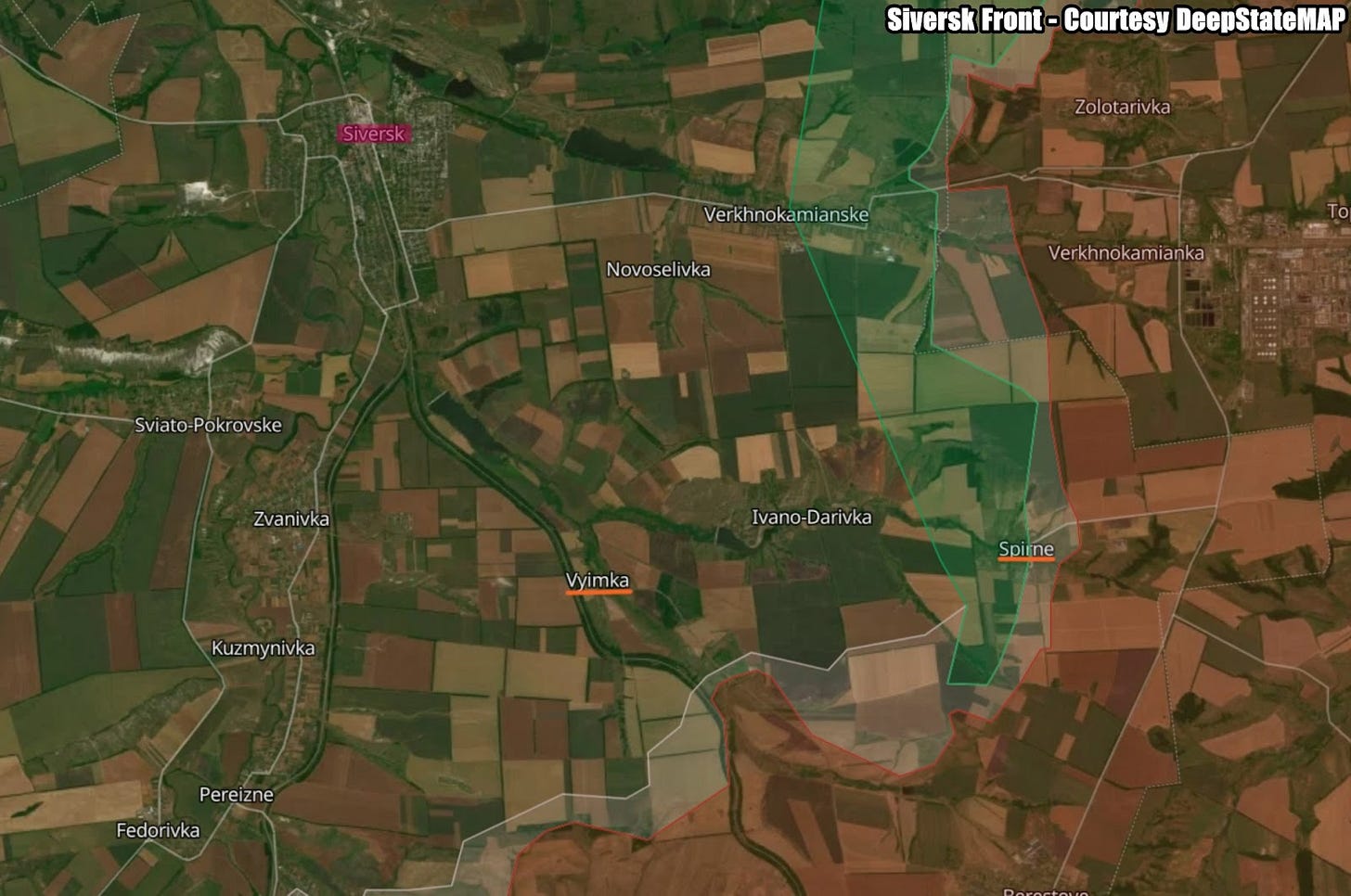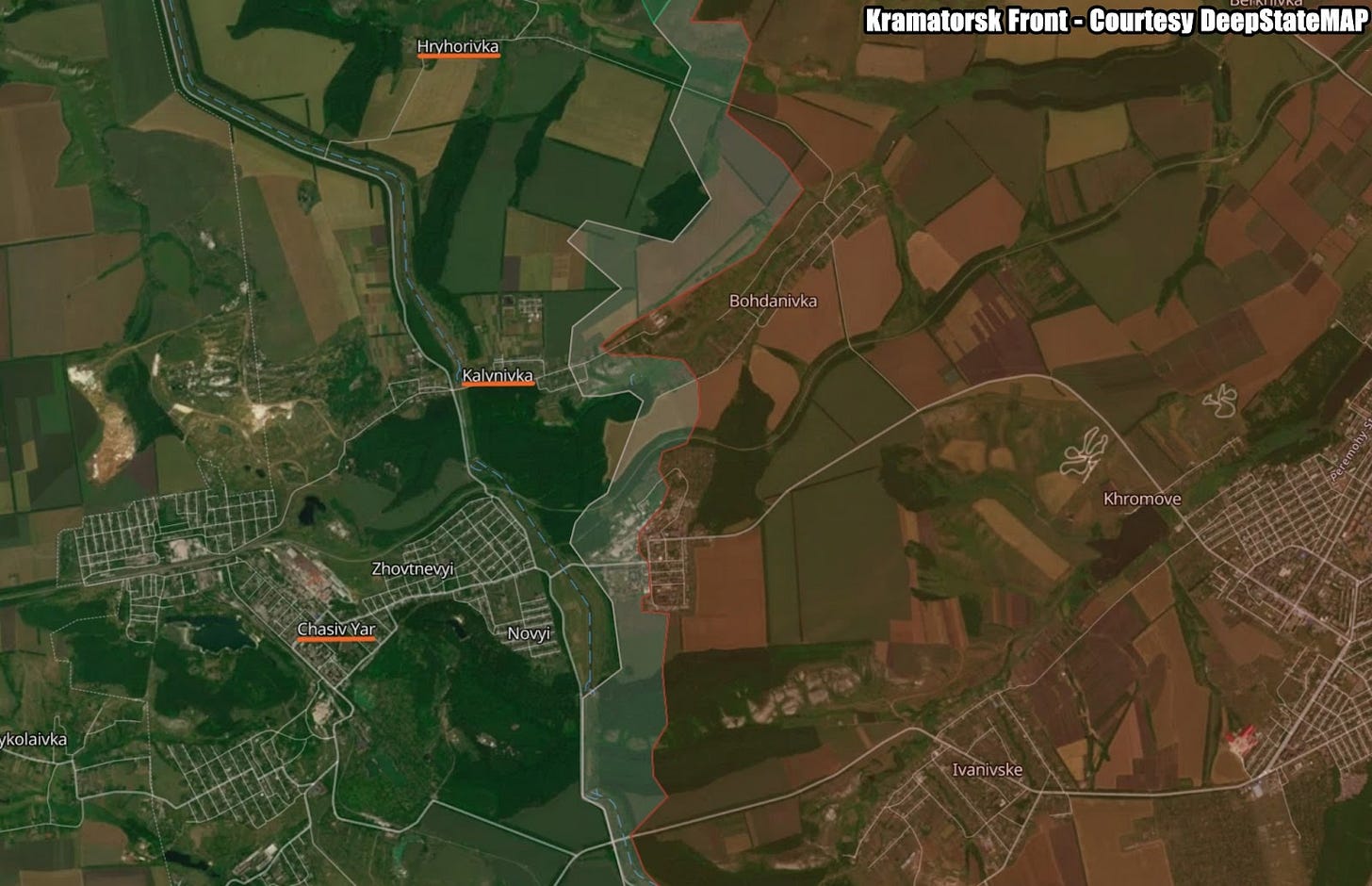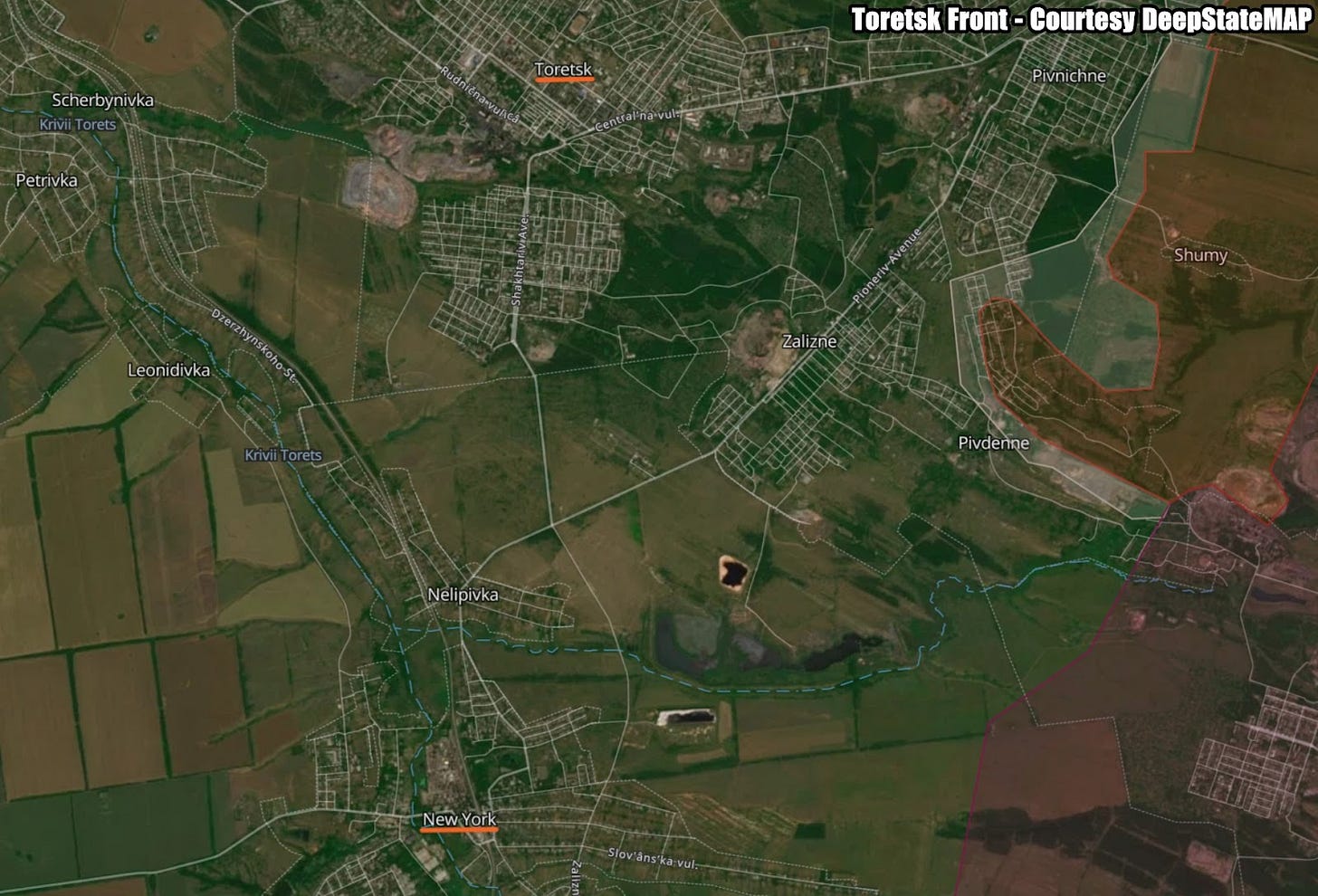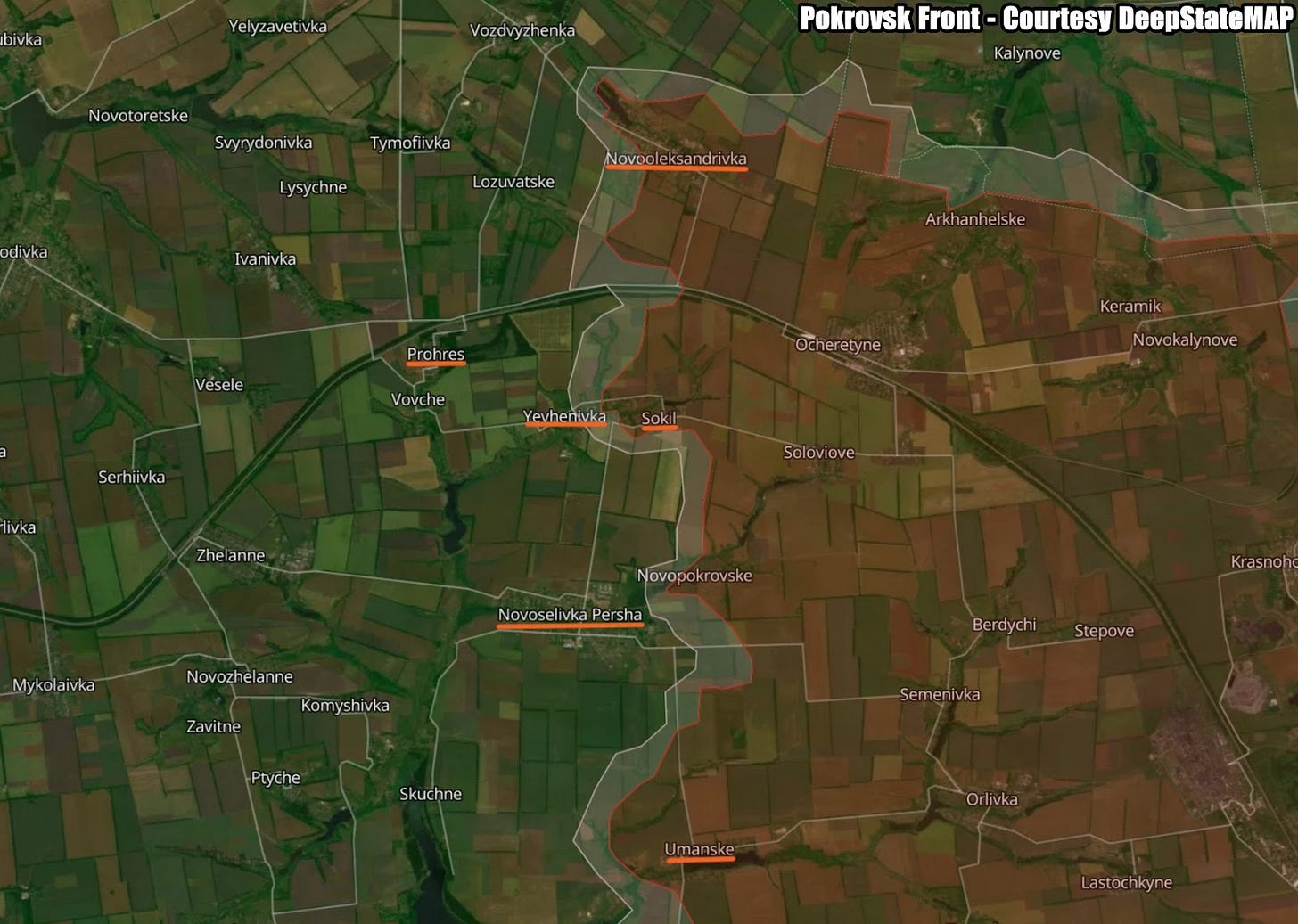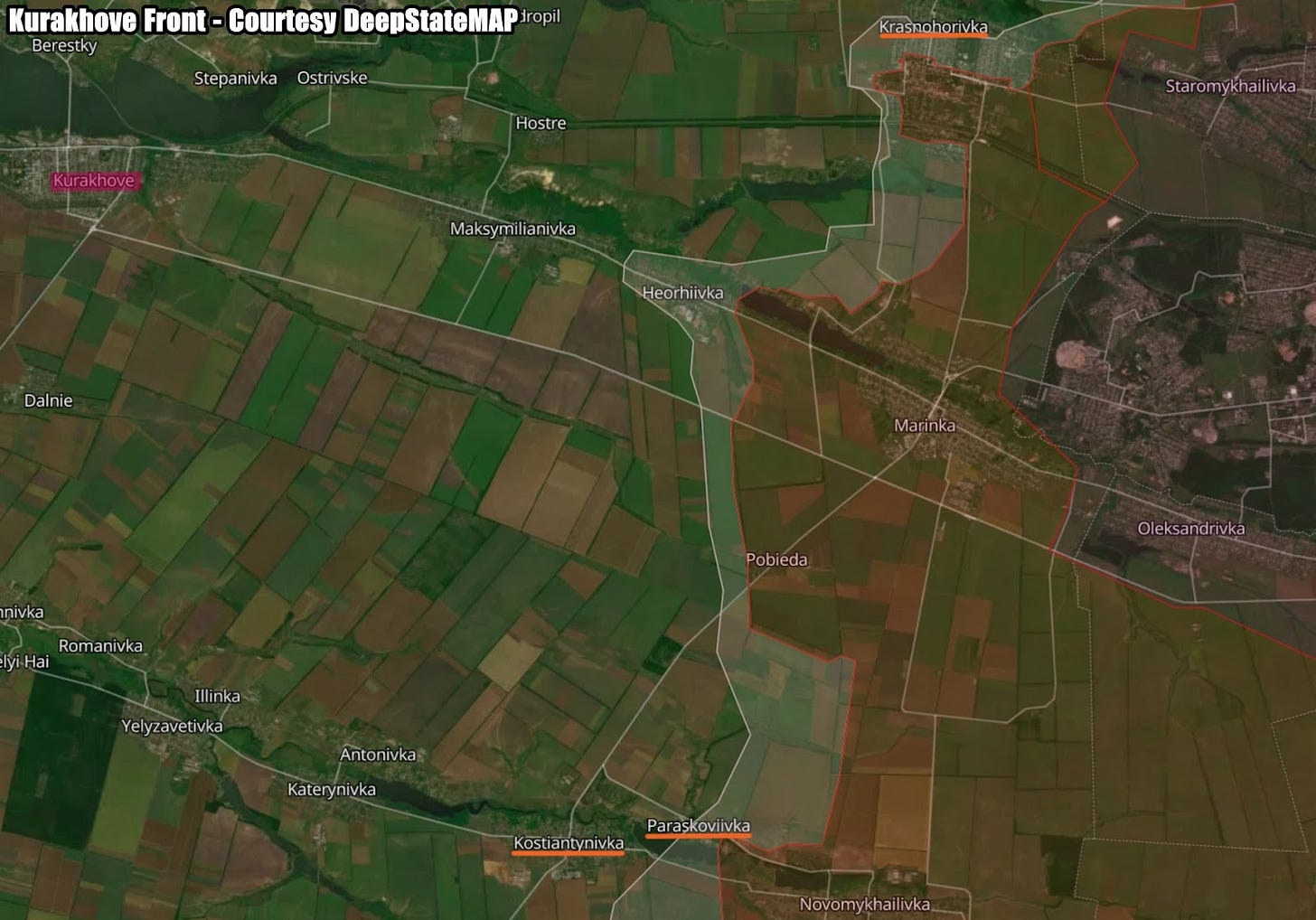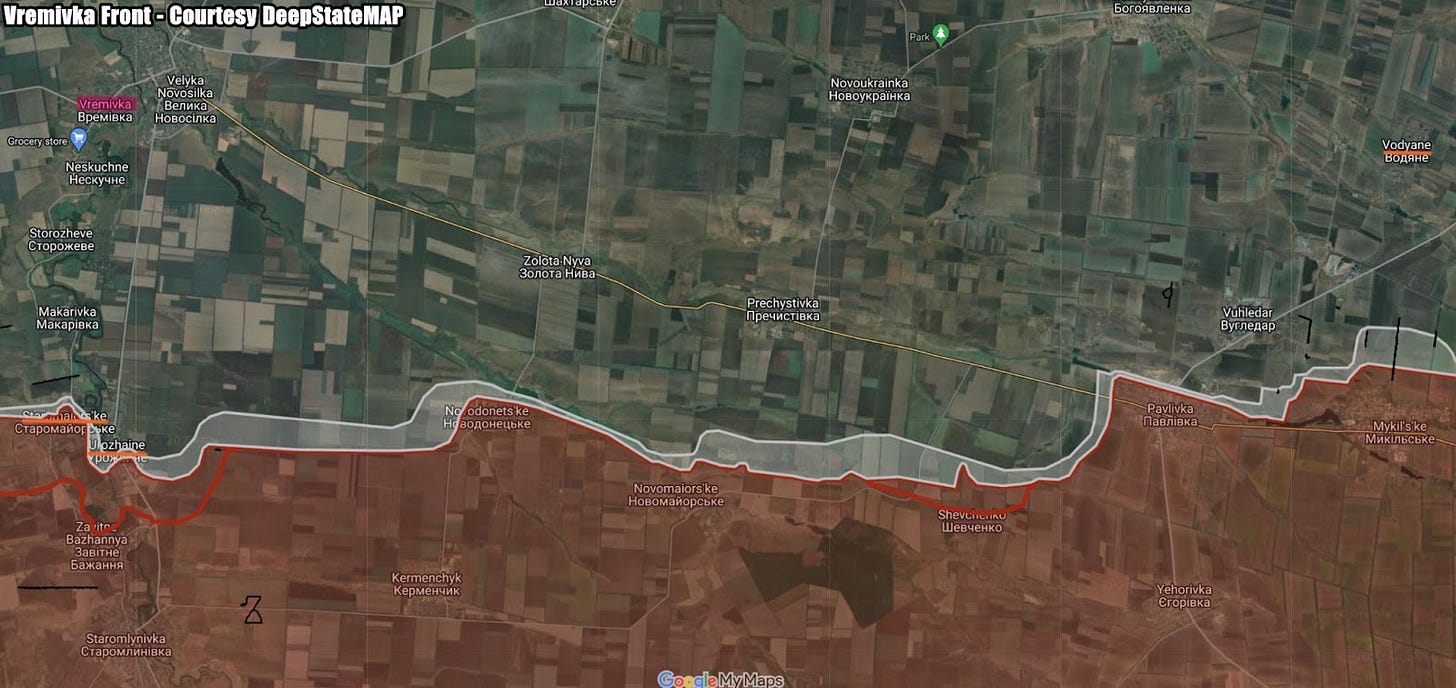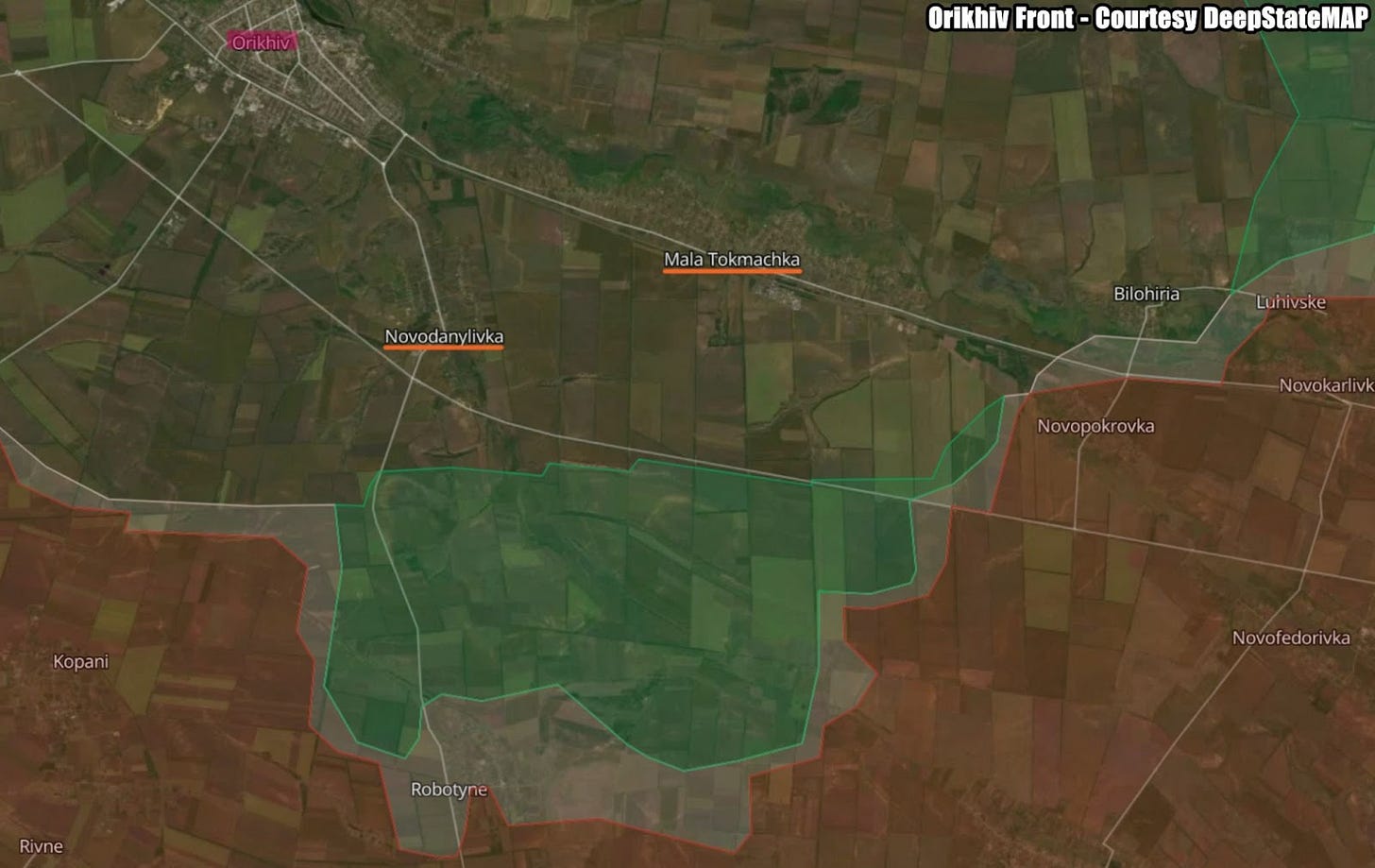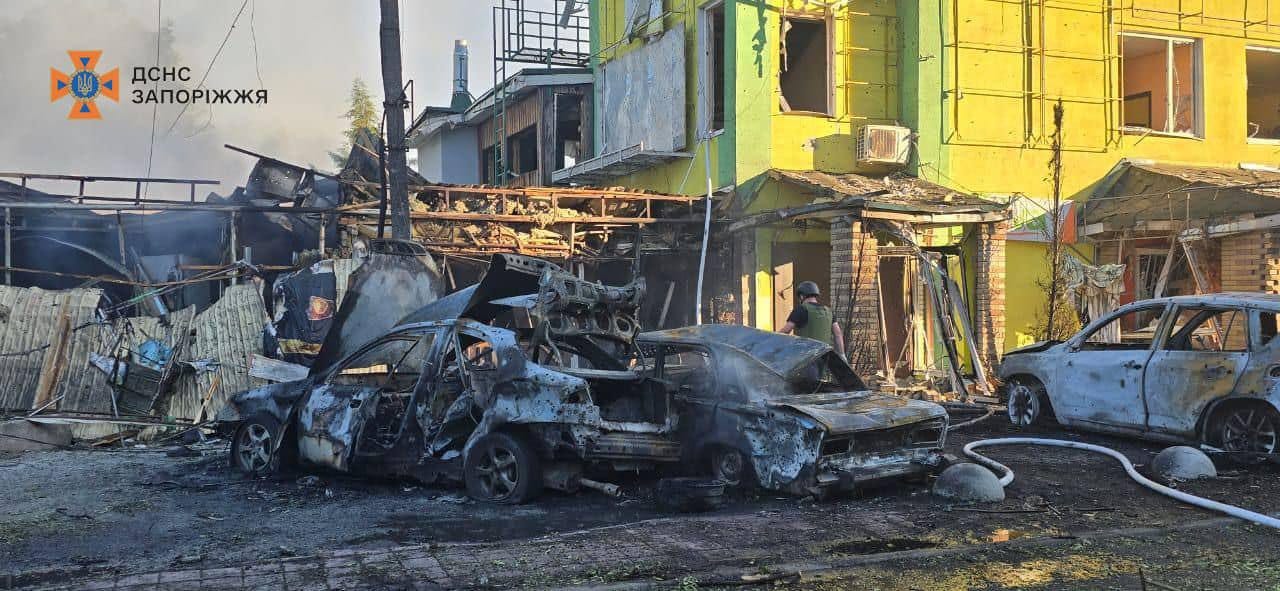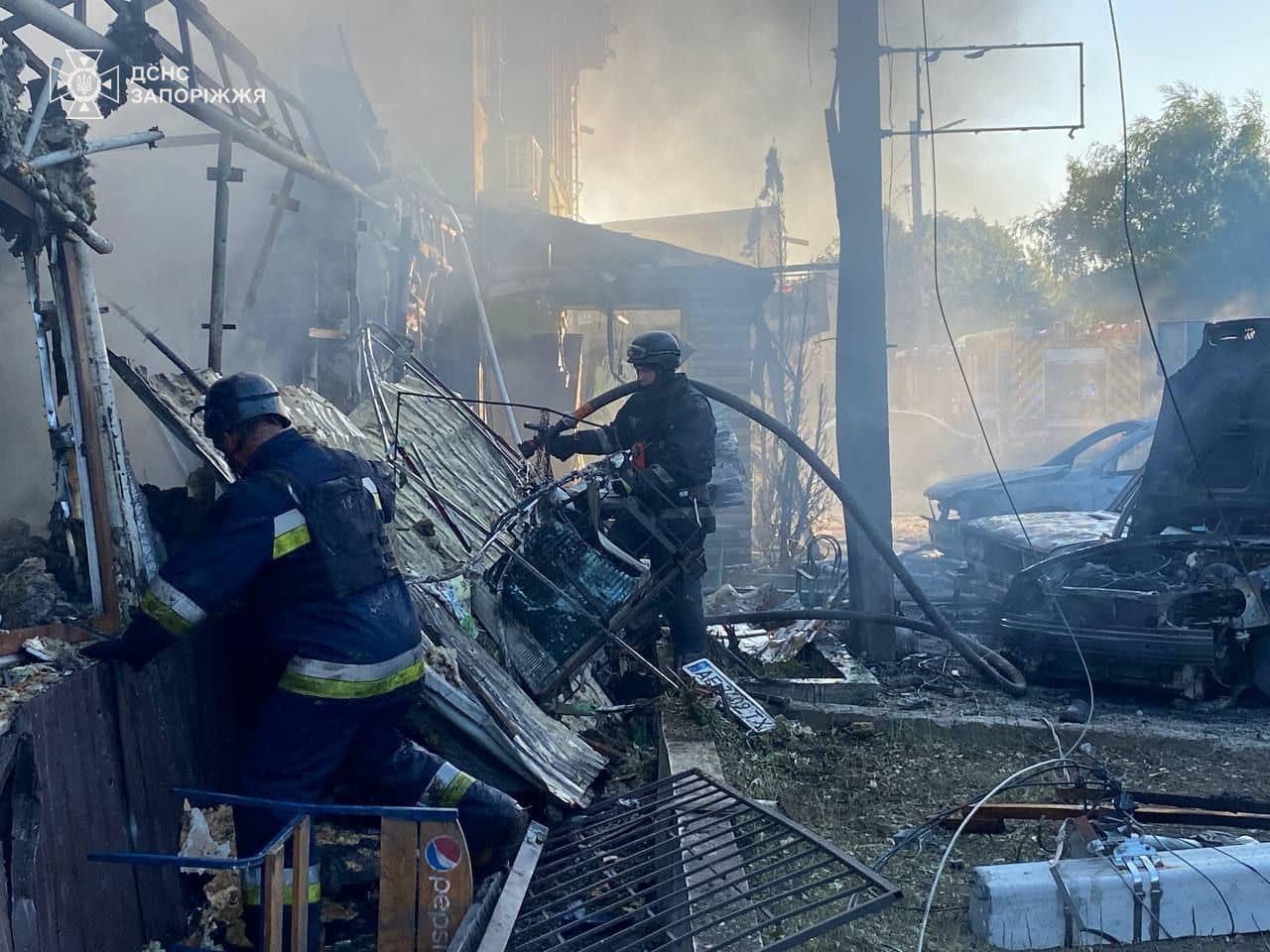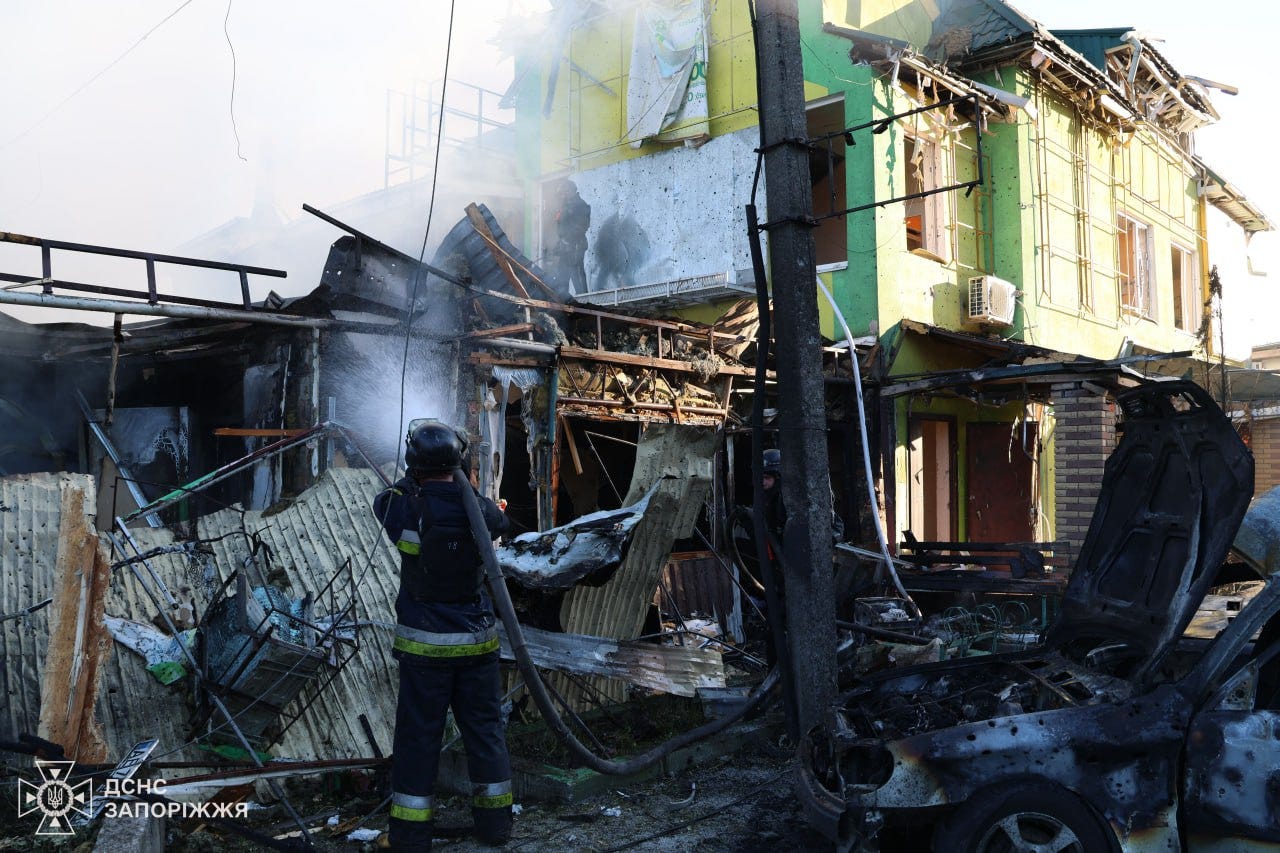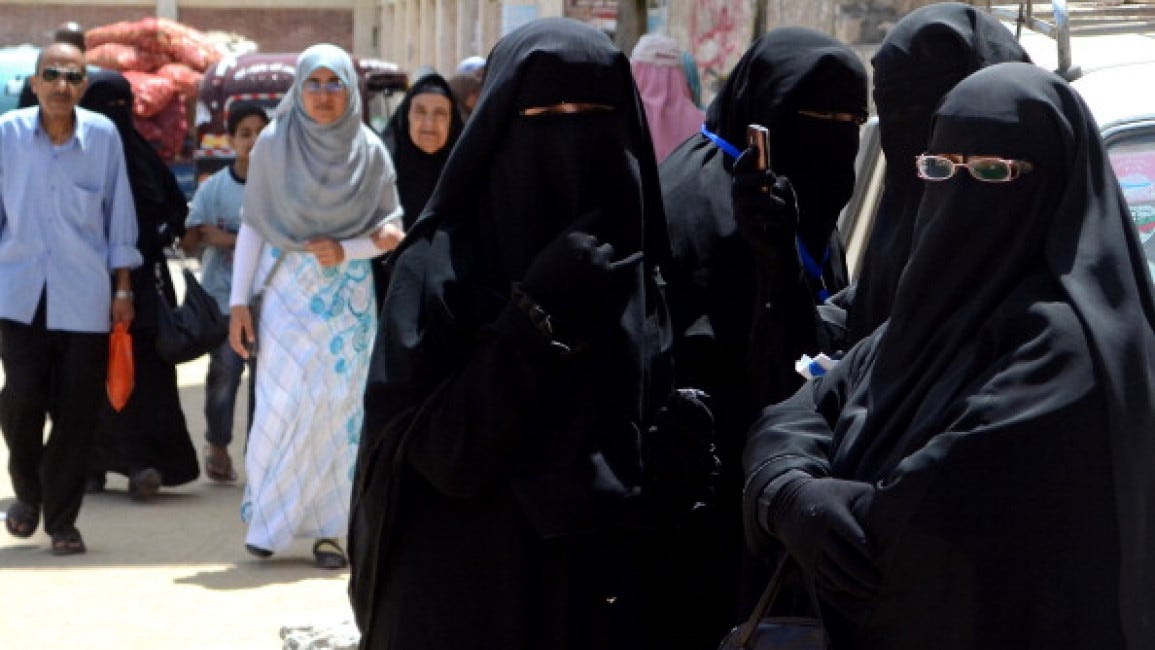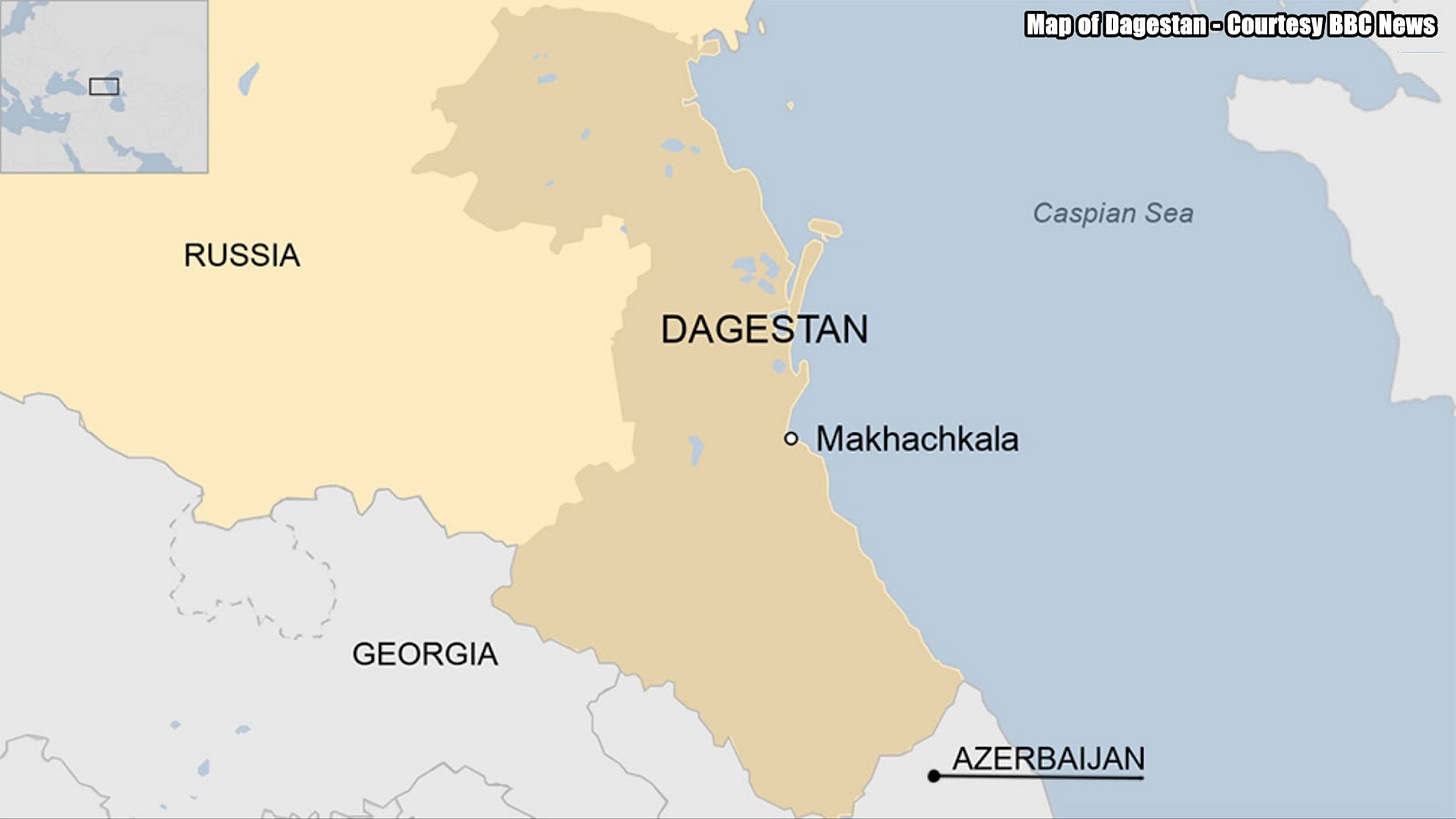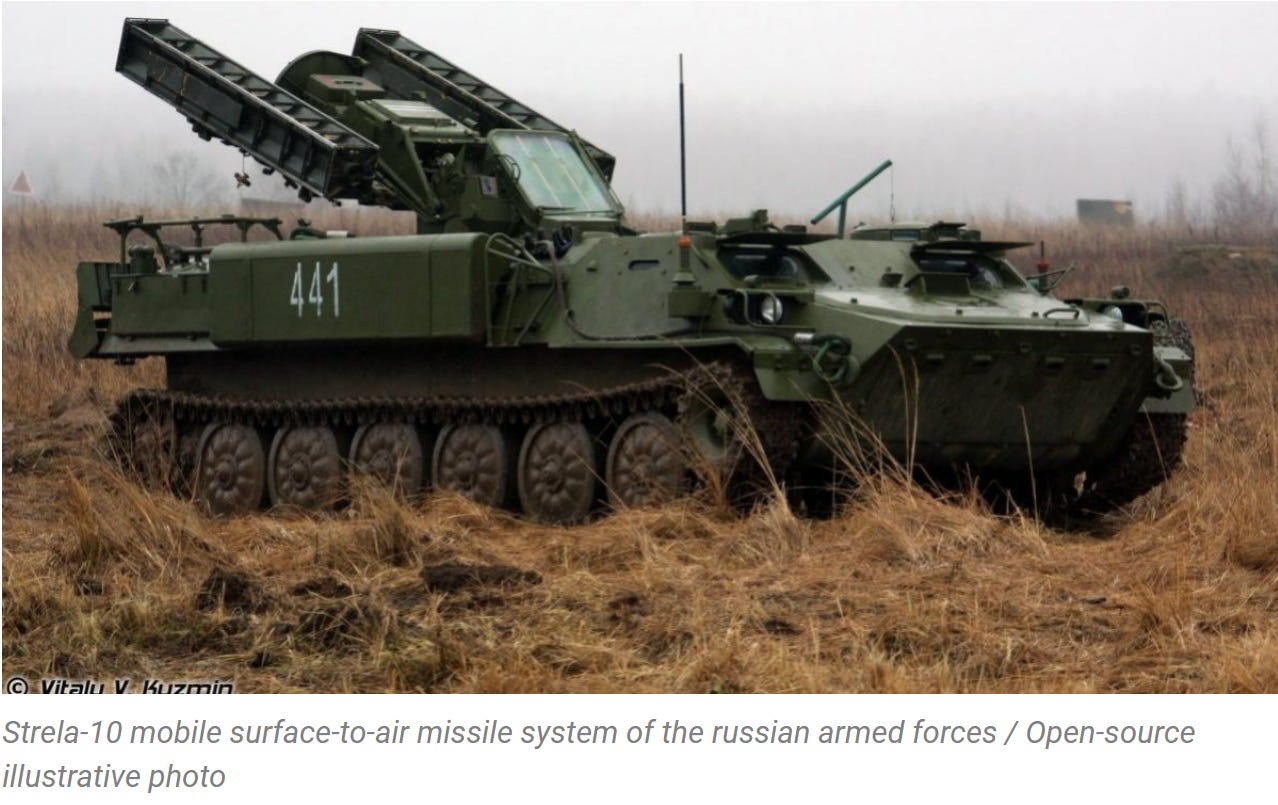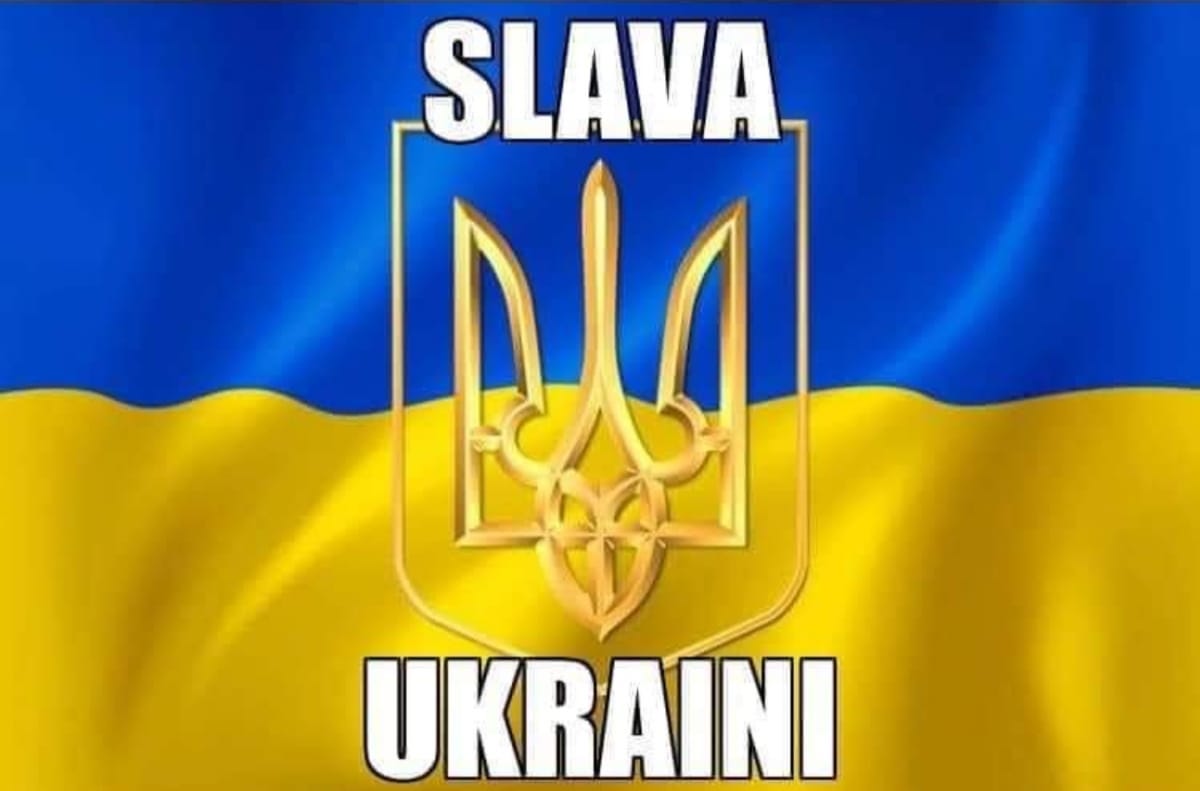Slava Ukraini! In early 2022 I began a Telegram channel aggregating news from a number of sources daily on the war in Ukraine. Since June 2023 I have provided a daily draft for the Ukraine War Brief Podcast collecting news from over 60 sources daily, much of which forms the basis of the script. While the Podcast is on hiatus I will make this Draft available here both on my own Substack and The People’s Media for those who wish to keep up with events on a daily basis.
ALONG THE CONTACT LINE
GSAFU Morning Report
The General Staff of the Armed Forces of Ukraine in its Operational Information update at 22:00 on June 29 stated that day 858 of the full-scale invasion of the Russian Federation against Ukraine was about to begin.
During the past day,117 combat engagements took place. Over the past 24 hours, the enemy carried out 2 missile strikes, 40 air strikes, 284 drone strikes and more than 3,000 artillery strikes across the positions of Ukrainian forces.
At the same time, Ukrainian soldiers continue to inflict losses in manpower and equipment on the occupying troops, exhausting the enemy along the entire front line and continue to disrupt the plans of Russian occupiers to advance deep into the territory of Ukraine.
Ukrainian Air Force and missile troops and artillery hit the occupier control point, fuel and oil warehouse and three concentration areas of the enemy's personnel.
Air Force Daily Report
Nothing to report.
The Khortytsia operational-strategic group
(Responsible for the northeastern part of Ukraine. )
Kharkiv axis: The enemy, supported by aviation, 12 times unsuccessfully attacked in the area of Vovchansk. The situation is under control.
Kupyansk axis: The enemy made 7 attempts to breach Ukrainian positions near the settlements of Synkivka, Stepova Novoselivka and Stelmakhivka. The battle continues near Sinkivka.
Lyman axis: The enemy attacked Ukrainian positions 5 times in the vicinity of Petrivske, Nevske and Torske. The situation is under the control of Ukrainian defenders.
Siversk axis: Russian forces carried out 6 assaults in the vicinity of Spirne and Vyimka.
Kramatorsk axis: Ukrainian defenders, over the day, repelled 7 attacks in the vicinity of Hryhorivka, Kalynivka and Chasiv Yar.
Toretsk axis: Russian forces, assisted by aviation, made 8 attempts, assisted by aviation, to breach Ukrainian positions in vicinity of Toretsk and New York
The Tavria operational-strategic group
(Responsible for the central-eastern and southeastern part of Ukraine.)
Pokrovsk axis: This area continues to have the highest intensity of combat.The enemy conducted 41 attacks against Ukrainian defences in this area over the last day in the vicinity of Novooleksandrívka, Prohes, Yevhenívka, Sokil, Novoselívka Persha and Umanske
Kurakhove axis: The enemy made 14 attacks in the vicinity of Krasnohorivka, Paraskoviivka and Kostiantynika. The situation is under the control of our defenders.
Vremika axis: The enemy made 7 attacks in the vicinity of Staromaiorske, Urozhaine and Vodiane
Orikhiv axis: The enemy made 2 attacks in the vicinity of Novodanylivka and Mala Tokmachka
The Odesa operational-strategic group
(Responsible for Kherson, Qırım, (also known as Crimea) and the Black Sea.)
Prydniprovsk axis: The enemy made 4 attempts to breach the defences of Ukrainian forces on the left bank of the Dnipro. In the vicinity of Krynky
TEMPORARILY OCCUPIED TERRITORIES
Nothing to report.
THE HOME FRONT
Russian attack on civilians in the city of Vilniansk results in 31 casualties
On 29 June at 5:40 p.m. Russian troops struck the central part of Vilniansk, causing fires in several vehicles and buildings, the State Emergency Service of Ukraine reported.
The Russian attack claimed the lives of seven people, including two children, injured 24 and damaged residential buildings, shops, public buildings, critical infrastructure, and vehicles.
In a statement addressing the Russian attack on Vilniansk, President Volodymyr Zelenskyy emphasised the need for more modern air defence systems in Ukraine.
Ivan Fedorov, the Governor of Zaporizhzhia Oblast, declared 30 June as a day of mourning for those killed in the attack on Vilniansk.
“Unspeakable pain. Condolences to the families of the victims. The world must stop the terrorists,” Fedorov wrote on Telegram.
All photos courtesy State Emergency Services
Russia used over 800 guided aerial bombs against Ukraine this week
Russia has used more than 800 guided aerial bombs against Ukraine this week alone, President Volodymyr Zelenskyy said on June 30.
Guided aerial bombs are precision-guided munitions that have a shorter range than missiles, but are far cheaper to produce. The weapons are launched from aircraft within Russian territory, outside the range of Ukrainian air defence.
Civilian casualties from guided aerial bomb attacks are often reported in areas close to the Russian border, such as Kharkiv, Donetsk, and Sumy oblasts.
"Ukraine needs the necessary forces and means to destroy the carriers of these bombs, in particular, Russian combat aircraft where they are. Long-range strikes and modern air defence are the basis for stopping the daily Russian terror," Zelenskyy said, thanking "all partners who understand this."
Defense Minister Rustem Umerov said on May 25 that Russia has dropped nearly 10,000 guided bombs on Ukraine since the start of 2024.
RUSSIAN WORLD
Ethnic and religious tensions rise in Russia after Russian official criticises “islamic terrorism”
The Institute for the Study of War (ISW), a US based think tank stated in their June 29 Russian Offensive Campaign Assessment that two prominent Russian officials appear to be spearheading divergent paths for addressing religious extremism in Russia as ethnic and religious tension in Russia continues to rise.
Russian Investigative Committee Head Alexander Bastrykin commented on the June 23 terrorist attacks in the Republic of Dagestan and claimed on June 29 that Islamic terrorists were "able to carry their banner of Islamic terror" into Russia and that the State Duma must respond to the threat of Islamic terrorists in Russia.
Bastrykin's indictment of Islamists prompted backlash from Chechen Republic Head Ramzan Kadyrov, who urged Bastrykin and other Russian officials to choose their words carefully and avoid characterising all Muslims as terrorists.
Kadyrov warned that such statements threaten the unity and stability of Russia's socio-political situation. Russian milbloggers and lower-level Russian officials have previously participated in similar debates, and it is significant that Kadyrov was willing to openly criticise another high-level Kremlin official on this issue.
Bastrykin has previously positioned himself as a prominent figure in Russia's ultranationalist movement and is placing himself at odds with Kadyrov, who often presents himself as a representative of Russia's Muslim minority.
Putin previously attempted to quell concerns within the Russian information space about the threat posed by migrant and Muslim communities following the Crocus City Hall attack on March 22 by simultaneously calling for unspecified changes to Russia's migration policy and denouncing Islamophobia and xenophobia.
Putin may weigh in on Bastrykin's and Kadyrov's debate in the coming days in hopes of similarly quelling concern among Russians and a possible future conflict between Bastrykin and Kadyrov.
Doubts grow in Russia about the Kremlin’s ability to prevent further terrorist attacks
The Institute for the Study of War (ISW), a US based think tank stated in their June 29 Russian Offensive Campaign Assessment that Russian ultranationalists continue to express growing doubt in Russian authorities' ability to prevent another terrorist attack and to address ethnic and religious tensions within Russia following the June 23 terrorist attacks in the Republic of Dagestan.
Russian ultranationalists widely circulated a story alleging that extremists harassed a Russian doctor in Dagestan who refused to see a patient who would not remove her niqab (a long garment worn by some Muslim women to cover their entire body and face, excluding their eyes) and claimed that extremist actors orchestrated the event to incite further ethnic and religious tensions within Dagestan.
Russian ultranationalists also claimed that Dagestani officials know the identities of extremist thought leaders but have allowed radical Salafi-Jihadists to control entire spheres of public life within the republic.
These claims led to renewed discussions about banning niqab in Russia, which prompted Bastrykin to voice indirect support for banning the style of dress.
Select Western and Muslim-majority countries have imposed various statutes banning religious dress and garments that cover one's face, although the Russian ultranationalist discussion focusing on niqab is strange given the scarcity of Muslims wearing niqab in Russia. The Russian ultranationalist preoccupation with the niqab appears to be a talking point for ultranationalists to express their perception of an extremist threat emanating from Russia's Muslim-minority communities and to criticise Russian authorities for not doing enough to prevent what ultranationalists consider to be inevitable future terrorist attacks.
Russian ultranationalists will likely continue to express their fears about further terrorist attacks in ways that further inflame ethnic and religious tension, and ISW continues to assess that Russian ultranationalist rhetoric is partially alienating minority and Muslim-majority communities and generating animosities that Salafi-Jihadi groups can exploit in recruitment efforts.
NEWS WORLDWIDE
Western media criticised for amplifying Russian narratives on Crimea strike
Western experts accused leading media outlets, including the BBC, The Guardian, and CNN of unwittingly promoting Russian narratives in their coverage of Ukraine’s recent strike on a military facility in occupied Crimea.
The Ministry of Defense of Ukraine confirmed the strike on the Space Surveillance and Communication Center in Crimea, an important military site that helped Russians target civilian objects in Ukrainian cities.
However, initial reports from major news organisations focused heavily on Russian accounts emphasising civilian casualties on Crimean beaches.
German commentator Jürgen Nauditt pointed out apparent inconsistencies in Russia’s official statements, which initially claimed to have intercepted a US-supplied ATACMS missile over the beach before shifting to accusations of a deliberate Ukrainian attack on civilians.
Debris of Tor air defence missiles were found on the beach, which indicates the work of the Russian air defence system.
Most of the debris fell into the sea perpendicular to the beach, indicating that the missile was headed for another target but was shot down on approach.
Only a small part of the debris fell on the beach itself.
One rule always applies - russians always lie.
— Jurgen Nauditt
MILITARY & TECH
Ukraine is now mass-producing strike drones with range of over 1,000 kilometers
Ukraine has launched serial production of strike drones with a range of over 1,000 kilometres,Herman Smetanin, the head of state-owned company Ukrainian Defense Industry, also known as Ukroboronprom, said on June 29. In an interview with Armyinform.
Smetanin said Russia's "huge resources and super-powerful industry" meant Kyiv had to take a more "flexible and inventive" approach to manufacturing weapons.
Ukraine employs long-range drones to strike deep into Russian territory, targeting military infrastructure such as airfields and logistics, as well as oil refineries and depots. The strikes against oil infrastructure are intended to disrupt fuel supplies to the Russian military and diminish Moscow's export revenues, crucial for funding the war.
Experimental Ukrainian drones have struck targets in Russia as far as the Tatarstan Republic, some 1,200 kilometres (750 miles) away from the Russia-Ukraine border.
Smetanin said that with the help of "private individuals," Ukrainian Defense Industry was now able to "scale production" of long-range drones.
Below is a representative photo of Ukrainian designed and built drones, not necessarily of the type referred to in the article.
Ukrainian Military Explains the Reasons Why Russians Often Drop Bombs on Their Own Territory
Since the beginning of 2024, russian terrorists have dropped more than 100 guided bombs on Belgorod Oblast as well as the temporarily occupied territories of Ukraine. There are some reasons why Russian terrorists drop their bombs there so often. Ukrainian ArmedForces spokesman Ivan Tymochko explained in a TV interview. Defense Express reports.
"It saves us, the fact that these bombs are not only inaccurate, but also that the technological gliders are not always perfect and do not always open. And then these bombs fall on Russia's territory," he said.
Another factor is that Russian terrorists are afraid to fly close to the territory of Ukraine during bombings. Ukrainian air defence systems can quickly shoot down an unwary aircraft.
"Despite the huge amount of Russian aircraft, they do not fly near the frontline, because their downing is almost guaranteed. Therefore, they try to work at a distance of at least 50 kilometres from the frontline. but it causes a number of technical problems," Tymochko summarised.
It should be noted that Russian terrorists have accidentally bombed Belgorod Oblast as well as some temporarily occupied territories of Ukraine at least 75 times over the past three months. In all cases, the perpetrators were not punished as well as no investigations were conducted.
Strela-10M4 Was Supposed to Become the Anti-Drone Weapon russia Was Seeking, Now Needs Extra Protection Against FPV Drones
Russian efforts to enhance the self-protection of air defense systems is an important factor that Ukrainian forces will have to find answers to, in order to remain that effective. Defense Express reports.
The Combined Arms Academy of the Armed Forces of the Russian Federation has patented a system of electronic suppression of unmanned aerial vehicles for short-range air defense weapons, foremostly for the Strela-10 mobile surface-to-air missile system, Russian state-affiliated media claims.
With the new "targeted counter-drone system," russian air missile launchers will get insurance in the form of additional passive anti-drone protection, the sources explain. Notably, they say the electronic warfare (EW) device will be shaped similarly to a launch tube of a surface-to-air missile.
The EW system will not only generate electronic interference but be able to determine the type of UAV and which side it belongs to, i.e. have an Identification Friend or Foe feature. The EW equipment will be installed during production of new SAM systems or modernization of existing ones.
To add to the context, Defense Express reminds of a special modernization of the Strela-10 designated M4. The Strela-10M4 was positioned in Russia as a system tailored for counter-UAV missions.
Grumpy here - The fact these air defence systems apparently require EW protection in order to not be destroyed by the very UAV’s they were meant to shoot down is a tacit admission of their uselessness on the modern battlefield.
That’s it for today’s Draft folks if you would like to keep up with events in Ukraine daily please consider subscribing, its free!
Feel free to share this update with your friends. Heroyam Slava!







